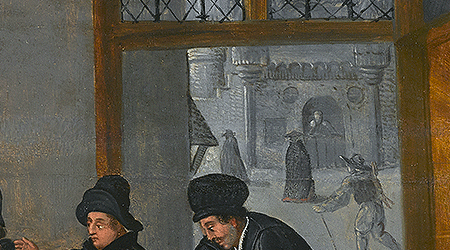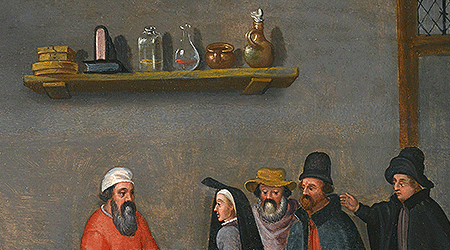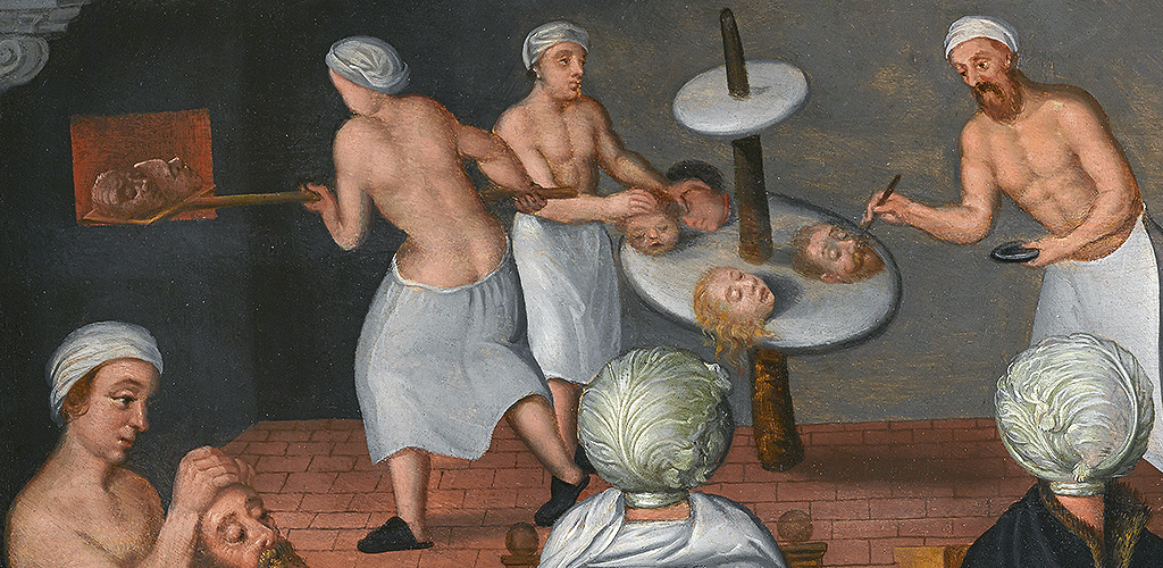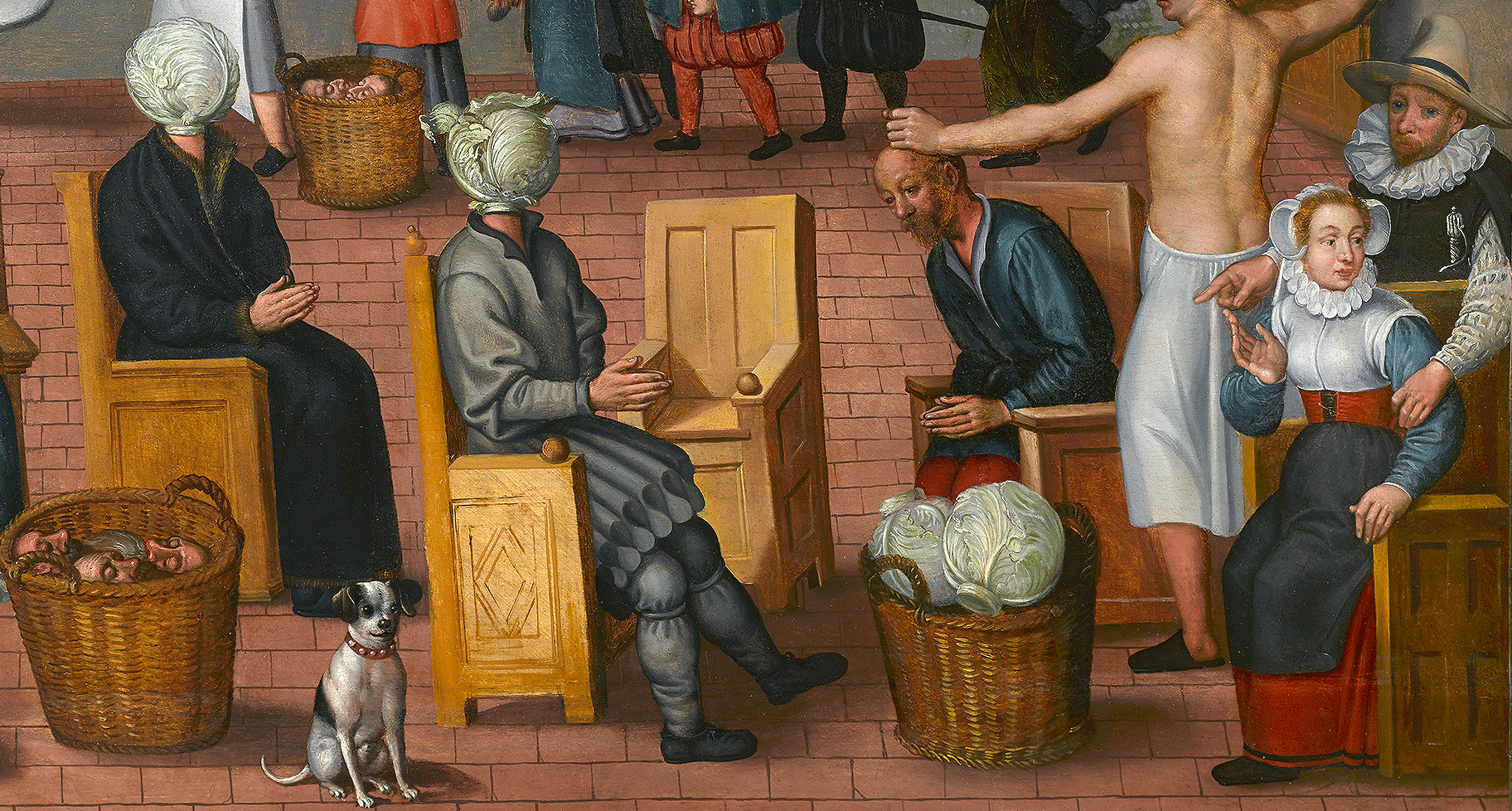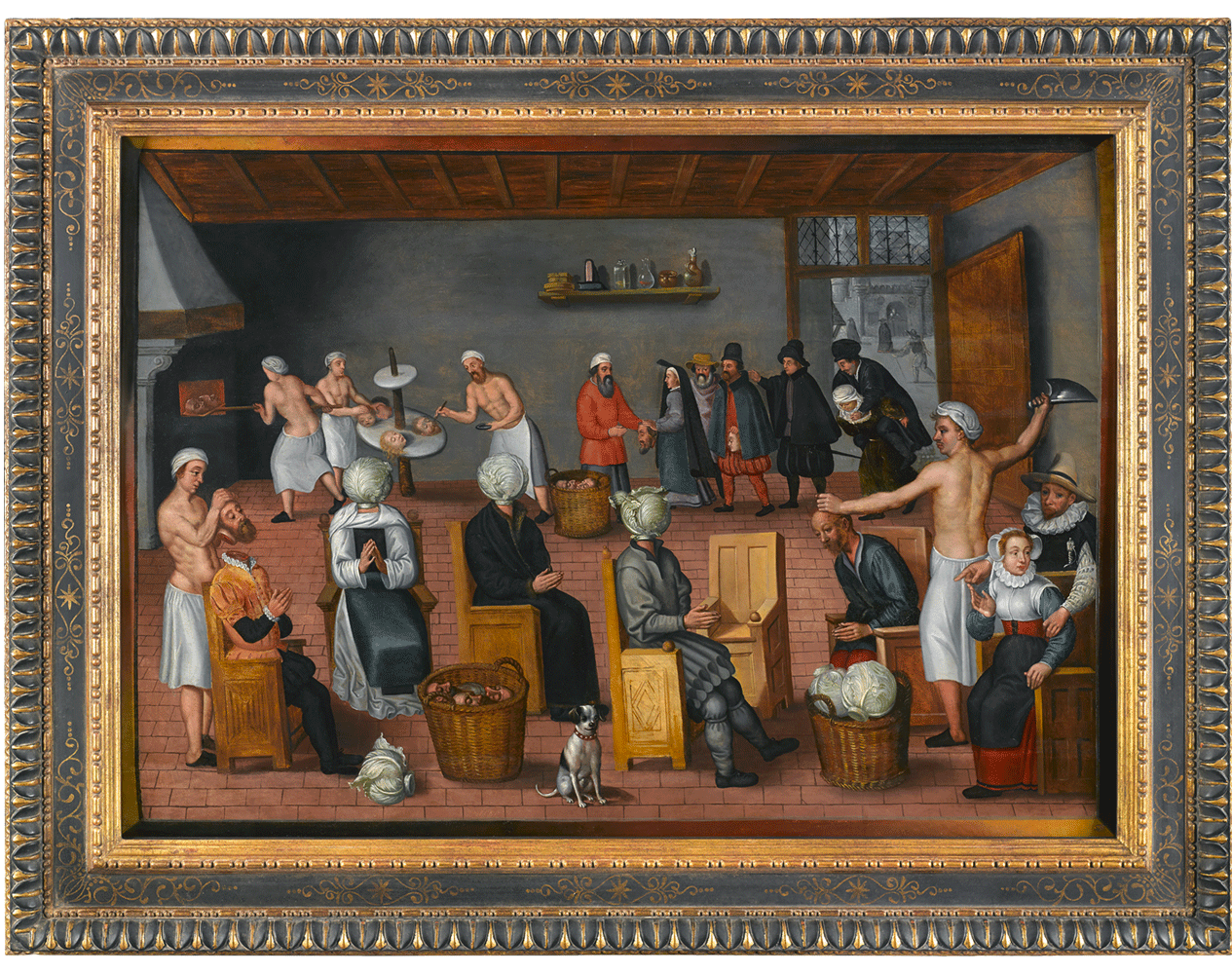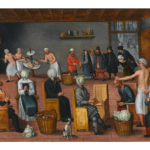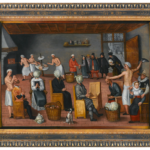The painting depicts the curious legend of the baker of Eeklo, which was popular in the Netherlands during the 16 century. According to the story, those who wanted to change their appearance or revert the effects of time on their faces could go to the town of Eeklo, where they could have a new head baked for them. The head would be carefully cut from the trunk, kneaded, glazed and placed into the oven. In the meantime, a green cabbage was placed over the trunk, symbolically “replacing” the head. Once the new head was baked, it was sewn in its place on the trunk. However, the new head could fail to bake, or itcould over bake, resulting in deformed or deficient heads. This story served as a cautionary tale to those who were dissatisfied with their appearance.
There are about ten extant versions depicting this interesting subject, with differing compositions. The best known is a small panel in the Rijksmuseum, Amsterdam, on display in the Muiderslot, which is labelled in the 1976 Rijksmuseum catalogue as ‘copy after Cornelis van Dalem and Jan van Wechelen’. Others are, for example, in the museums in Leipzig and Turin, Sabauda. The existence of these many versions attests to the popularity of the story and the influence of the image. The background is also depicted in a gallery interior by David Teniers the Elder (see E. Duverger, H. Vlieghe, David Teniers der Aeltere, Utrecht 1971, fig. 47).
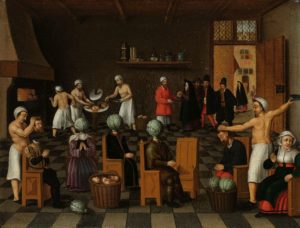
Cornelis van Dalem (copy after) & Jan van Wechelen (copy after), The Legend of the Baker of Eeklo, 1550 – 1650, Rijksmuseum Amsterdam
The present painting relates closest to the panel in the Rijksmuseum, and Dr.Luuk Pijl has suggested a tentative date of circa 1570-1580 on stylistic grounds, on the basis of photographs. It is quite likely that this and the Rijksmuseum version relate in turn to the original by Cornelis van Dalem and Jan Van Wechelen, whereabouts of which remain so far unknown.
Cornelis van Dalem (1530-1573) – Flemish Mannerist painter, contemporary of Pieter Bruegel the Elder, was most famous for his landscapes and cityscapes. The figures in his paintings were often added by other artists, such as Gillis Mostaert or Jan van Wechelen (active in Antwerp circa 1530-1550).
Van Dalem’s paintings, the chronology of which remains to be established, were highly appreciated by 17ht-century connoisseurs; Rubens owned a landscape by him, to which he added the figure of St.Hubert hunting. Van Dalem’s Landscape with Primitive Men, of which only scattered fragments survive, was in the collection of Cornelis van der Geest and was included in Willem van Haecht’s imaginary depiction of his art gallery (1628; Antwerp, Rubenshuis).
